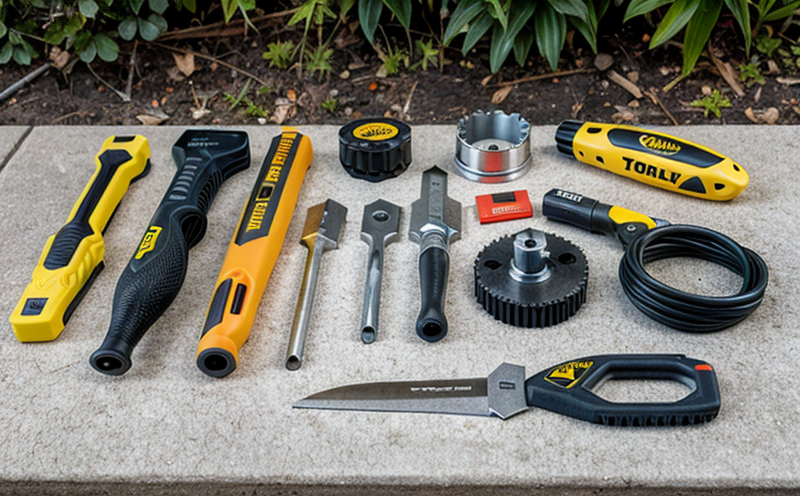Formaldehyde Content Testing in Wooden DIY Products
In the realm of consumer products and product safety testing, formaldehyde content testing plays a pivotal role in ensuring the health and well-being of end-users. Formaldehyde is a widely used chemical compound with various applications across numerous sectors including building materials, furniture, and home decor. When incorporated into wooden DIY products, formaldehyde can pose risks to human health if present at high levels.
Formaldehyde testing in wooden DIY items involves the assessment of formaldehyde content within these materials through rigorous laboratory analysis. This process ensures that all components meet regulatory standards set forth by relevant bodies such as ASTM and EN. The aim is not only to safeguard consumer health but also to promote sustainability practices, which are increasingly important in today's market.
The testing procedure typically begins with sample collection from the DIY product under scrutiny. Once collected, samples undergo detailed analysis using advanced analytical techniques like gas chromatography-mass spectrometry (GC-MS). These methods provide precise measurements of formaldehyde levels present in different parts of the wood and its composite materials.
It is crucial to note that excessive exposure to formaldehyde can lead to various adverse health effects ranging from eye irritation and respiratory issues to more severe conditions like cancer. Therefore, regulatory limits are imposed by organizations worldwide to control potential risks associated with this chemical.
The importance of formaldehyde content testing cannot be overstated; it serves multiple purposes beyond mere compliance checks. By conducting such tests early in the product development cycle, manufacturers can identify any issues related to formaldehyde emissions and address them proactively. Additionally, these tests help maintain brand reputation by ensuring products meet stringent safety standards.
In summary, formaldehyde content testing in wooden DIY products is essential for protecting both consumers and producers alike. It ensures adherence to international regulations while fostering sustainable manufacturing practices that benefit everyone involved in the supply chain from raw material suppliers all the way through to end-users who enjoy safer environments at home.
Why It Matters
The significance of formaldehyde content testing cannot be overstated, especially when dealing with wooden DIY products. As previously mentioned, formaldehyde is a common additive used in various building materials due to its properties that enhance durability and resistance against moisture damage.
- It acts as an adhesive binder during the manufacturing process of plywood or particleboard.
- Promotes better air tightness which helps maintain structural integrity over time.
- Can extend product lifespan by preventing decay caused by fungi and insects.
However, while these benefits are undeniable, improper handling of formaldehyde can lead to serious health concerns. Continuous low-level exposure has been linked to various respiratory problems including asthma, chronic obstructive pulmonary disease (COPD), and even lung cancer if levels exceed safe thresholds over prolonged periods.
The World Health Organization (WHO) has classified formaldehyde as a carcinogen—a substance capable of causing cancer in humans. This classification underscores the necessity for stringent controls on its use within DIY products intended for indoor environments where people spend significant amounts of time.
Given this backdrop, formaldehyde content testing becomes an indispensable tool not just for compliance with regulatory requirements but also for safeguarding public health. By implementing rigorous quality control measures at every stage from raw material procurement to final product inspection, manufacturers can significantly reduce risks associated with formaldehyde exposure.
Benefits
Formaldehyde content testing offers several advantages that extend beyond mere compliance with regulatory standards. Primarily aimed at protecting consumer health and safety, this service provides peace of mind knowing that products meet stringent international guidelines like ASTM D7459-13.
For manufacturers and suppliers, adhering to these tests ensures their reputation remains intact by consistently delivering high-quality goods free from harmful substances. Furthermore, it allows for early identification of potential issues during the production process enabling timely corrective actions before they become significant problems.
The benefits are not limited solely to businesses; consumers also reap substantial advantages when dealing with formaldehyde content tested DIY products:
- Reduction in indoor air pollution leading to improved respiratory health.
- Promotion of safer living spaces especially beneficial for families with children or elderly members who may be more susceptible to adverse effects.
- Increased confidence among consumers regarding the quality and safety of purchased items.
In addition, formaldehyde content testing supports sustainable manufacturing practices by encouraging responsible use of resources and promoting safer alternatives whenever possible. Overall, it contributes positively towards creating healthier living environments for all stakeholders involved in the product lifecycle.
Industry Applications
| Application Area | Description |
|---|---|
| Furniture Manufacturing | Involves the production of chairs, tables, cabinets, and other household furniture items made from wood containing formaldehyde-based adhesives. |
| Home Improvement Stores | Selling DIY kits that include wooden components treated with formaldehyde to enhance their durability and appearance. |
| New Construction Projects | Involves the use of formaldehyde-treated wood in framing, flooring, and other structural elements of newly built homes. |
- Woodworking Factories
- Plywood Mills
- Fabrication Shops





